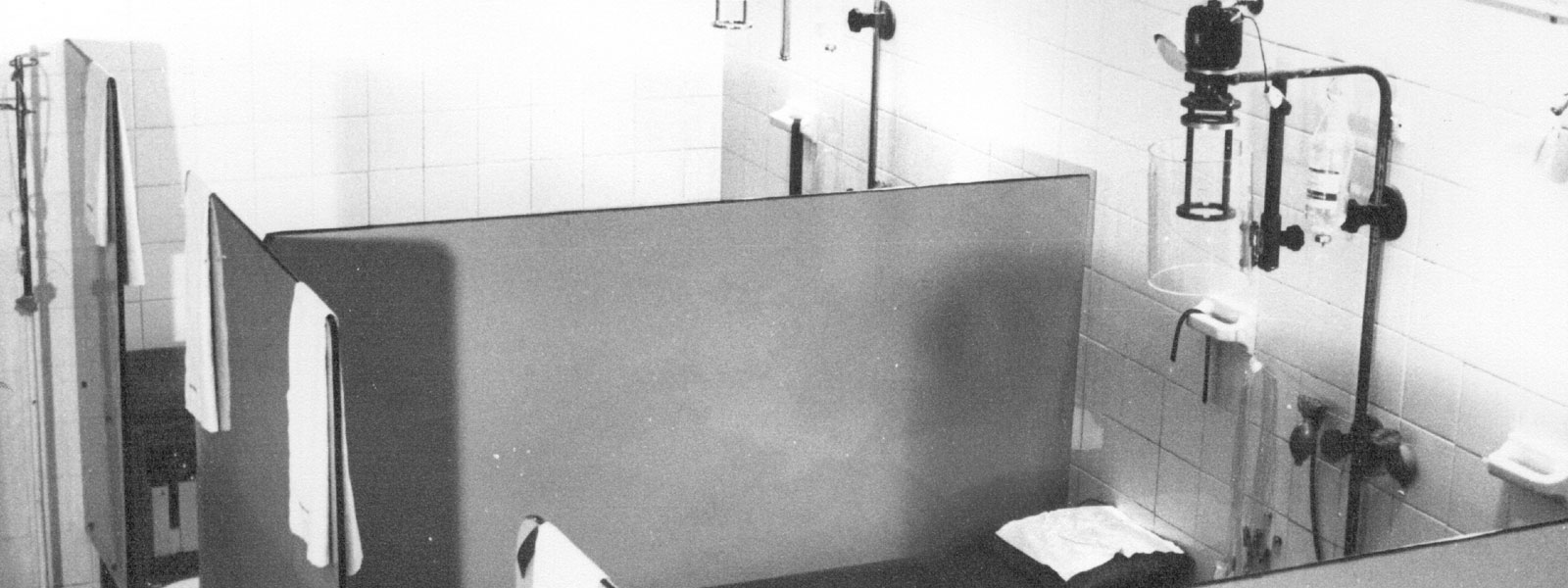Plasmapheresis in situ
A safer way to extract plasma
Technical file
Type of innovation: Device
Scope: Hemotherapy
Innovation leader: Grifols i Lucas, Víctor
Year: 1965
Period: 1909-1971
Geographical scope: International
Economic impact: High
Level of innovation: Disruptive
Patent: Yes
Interdisciplinary connections: -
Plasmapheresis was a great step forward for the development of plasma protein medicines, and thus very much part of the foundation of Grifols business. It remains an essential procedure which is widely used around the world.
“Víctor Grifols developed a faster centrifuge to perform the plasmapheresis right next to the donor, meaning that cells and platelets could be reinfused immediately after they had been extracted.”
Reducing the health risk
It is also a technique with negligible health risks for donors. In its early days, however, technical limitations meant that plasmapheresis was not as safe as it is today. The chief problem was that reinfusion of blood cells and platelets occurred hours or even days after the original extraction of whole blood. The time needed to centrifuge the donation of whole blood was five or six hours, due in part to the centrifuging process being separate from the extraction process. Usually, donors received the cells and platelets from their previous donation. If they came on a weekly basis, they were reinfused with the cells and platelets separated the previous week.
An innovation that is still in use
In 1965, Víctor Grifols developed a faster centrifuge to perform the plasmapheresis right next to the donor, meaning that cells and platelets could be reinfused immediately after they had been extracted.
The result was that donation, separation and re-injection could take place in the same place. Even more crucially, for the first time the three steps were effectively integrated into one seamless process. Once a donor left their bed, they did so with all their blood cells, leaving only their plasma behind.
Not surprisingly, the device was patented in various countries and for several years. Víctor Grifols carried on improving the apparatus, which in 1967 was named the Monofuge. Continuous centrifuges in use today are based on its principles, and a testament to the power of innovation to overcome health risks.

Bibliography
Grifols-Lucas, J.A. (1952). Use of Plasmapheresis in Blood Donors. British Medical Journal, 1(4763), 854.
Grifols-Lucas, V. (1965). Aparato para practicar, in situ, la plasmaféresis. Patente española de invención no. 309.216. Madrid: Oficina Española de Patentes.
Grifols-Lucas, V. (1965). Prodecimiento para practicar, in situ, la plasmaféresis. Patente española de invención no. 320.656. Madrid: Oficina Española de Patentes.
Grifols-Lucas, V. (1966). Aparato para practicar, in situ, la plasmaféresis. Certificado de adición no. 328.905. Madrid: Oficina Española de Patentes.
Grifols-Lucas, V. (1968). Method for performing plasmapheresis in situ. Patente americana de invención no. 3.407.812. Washington: United States Patent Office.
Dade Reagents Inc. (1968). Clinical experience with the Dade Monofuge plasmapheresis system. [Sales brochure]. Miami: Dade Reagents, Inc.
Dade Reagents Inc. (1968). New standards of safety and efficiency in plasmapheresis: the Dade Reagents Monofuge System. [Sales brochure]. Miami: Dade Reagents, Inc.
Grifols-Lucas, V. (1969). Apparatus for performing plasmapheresis in situ. Patente americana de invención no. 3.460.752. Washington: United States Patent Office.
Laboratorios Grifols, S.A. (1971). Proceso de la plasmaféresis en un banco de sangre americano. [Sales brochure]. Barcelona: Hemobanco de Laboratorios Grifols, S.A.
Grifols-Lucas, V. (2009). Amb un suro i un cordill. Vivències d'un empresari de postguerra. Barcelona: Grupo Grifols, S.A.
Grifols, S.A. (2011). ¿Y si lo hacemos así? Patentes de Víctor Grífols i Lucas. Barcelona: Grifols, S.A.
Avellà, R., & Miquel, B. (Eds.). (2015). Cuando un sueño se cumple. Crónica ilustrada de 75 años de Grifols. Barcelona: Grupo Grifols, S.A.
Related innovations
PROCEDURE
Plasmapheresis
BUSINESS MODEL
Blood bank: Hemobanco